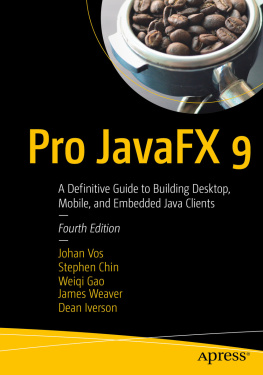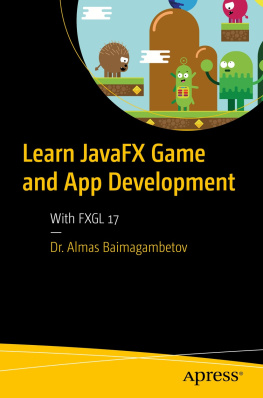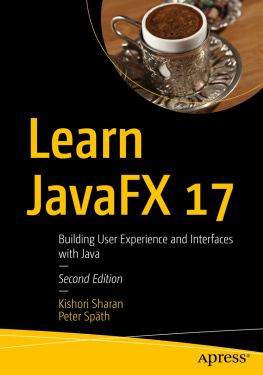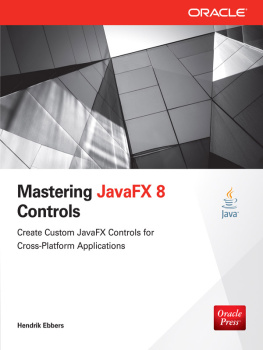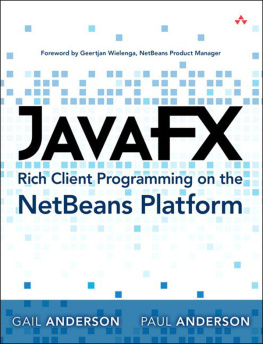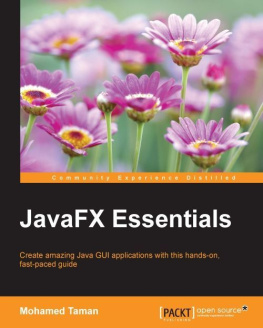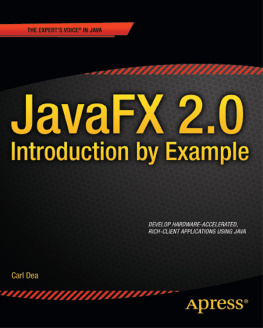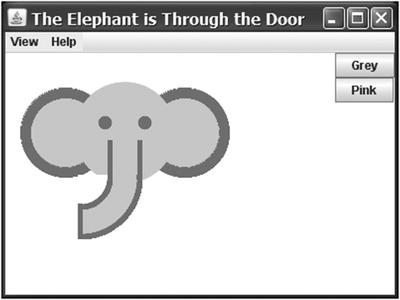Johan Vos - Pro JavaFX 9: A Definitive Guide to Building Desktop, Mobile, and Embedded Java Clients
Here you can read online Johan Vos - Pro JavaFX 9: A Definitive Guide to Building Desktop, Mobile, and Embedded Java Clients full text of the book (entire story) in english for free. Download pdf and epub, get meaning, cover and reviews about this ebook. year: 2018, publisher: Apress, genre: Computer. Description of the work, (preface) as well as reviews are available. Best literature library LitArk.com created for fans of good reading and offers a wide selection of genres:
Romance novel
Science fiction
Adventure
Detective
Science
History
Home and family
Prose
Art
Politics
Computer
Non-fiction
Religion
Business
Children
Humor
Choose a favorite category and find really read worthwhile books. Enjoy immersion in the world of imagination, feel the emotions of the characters or learn something new for yourself, make an fascinating discovery.
- Book:Pro JavaFX 9: A Definitive Guide to Building Desktop, Mobile, and Embedded Java Clients
- Author:
- Publisher:Apress
- Genre:
- Year:2018
- Rating:3 / 5
- Favourites:Add to favourites
- Your mark:
Pro JavaFX 9: A Definitive Guide to Building Desktop, Mobile, and Embedded Java Clients: summary, description and annotation
We offer to read an annotation, description, summary or preface (depends on what the author of the book "Pro JavaFX 9: A Definitive Guide to Building Desktop, Mobile, and Embedded Java Clients" wrote himself). If you haven't found the necessary information about the book — write in the comments, we will try to find it.
Use the JavaFX platform to create rich-client Java applications and discover how you can use this powerful Java-based UI platform, which is capable of handling large-scale data-driven business applications for PC as well as mobile and embedded devices. The expert authors cover the new more modular JavaFX 9 APIs, development tools, and best practices and provide code examples that explore the exciting new features provided with JavaFX 9, part of Oracles new Java 9 release. Pro JavaFX 9: A Definitive Guide to Building Desktop, Mobile, and Embedded Java Clients also contains engaging tutorials that cover virtually every facet of JavaFX development and reference materials on JavaFX that augment the JavaFX API documentation.
New material in this edition includes JavaFX UI controls and CSS APIs for modularization. Additionally, there is coverage of the Shader DSL for JavaFX that allows you to generate Shaders for OpenGL and Direct3D. After reading and using this book, youll have the knowledge to give you an edge in your next JavaFX-based project.
What Youll Learn
- Create a user interface in JavaFX
- Use SceneBuilder to create a user interface
- Build dynamic UI layouts in JavaFX and using the JavaFX UI controls
- Create charts in JavaFX
- Design and deploy for embedded, mobile and tablet
- Leverage JavaFX languages and markup
Who This Book Is For
Experienced Java programmers looking to learn and leverage JavaFX 9 for rich client-side Java development.
Johan Vos: author's other books
Who wrote Pro JavaFX 9: A Definitive Guide to Building Desktop, Mobile, and Embedded Java Clients? Find out the surname, the name of the author of the book and a list of all author's works by series.

